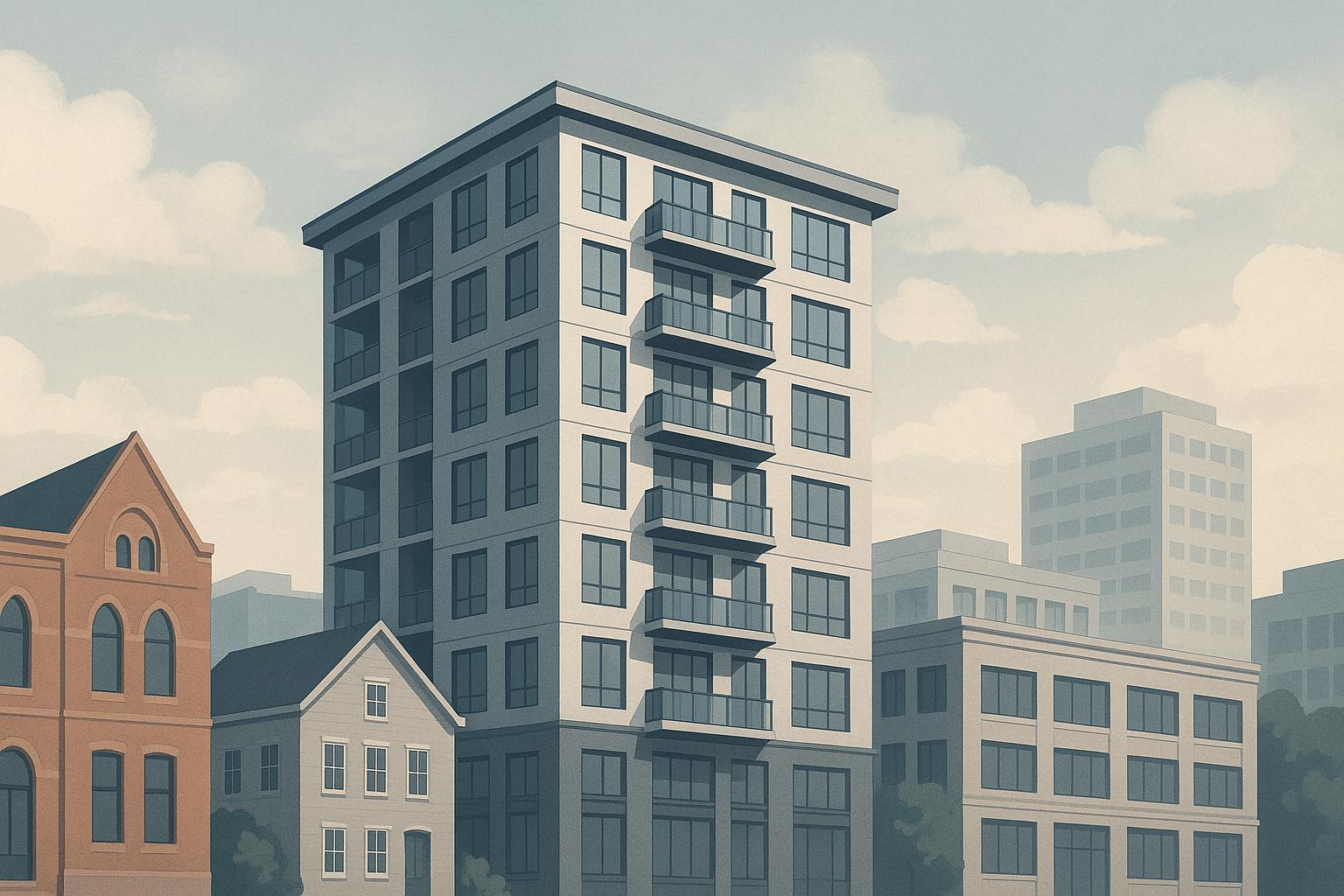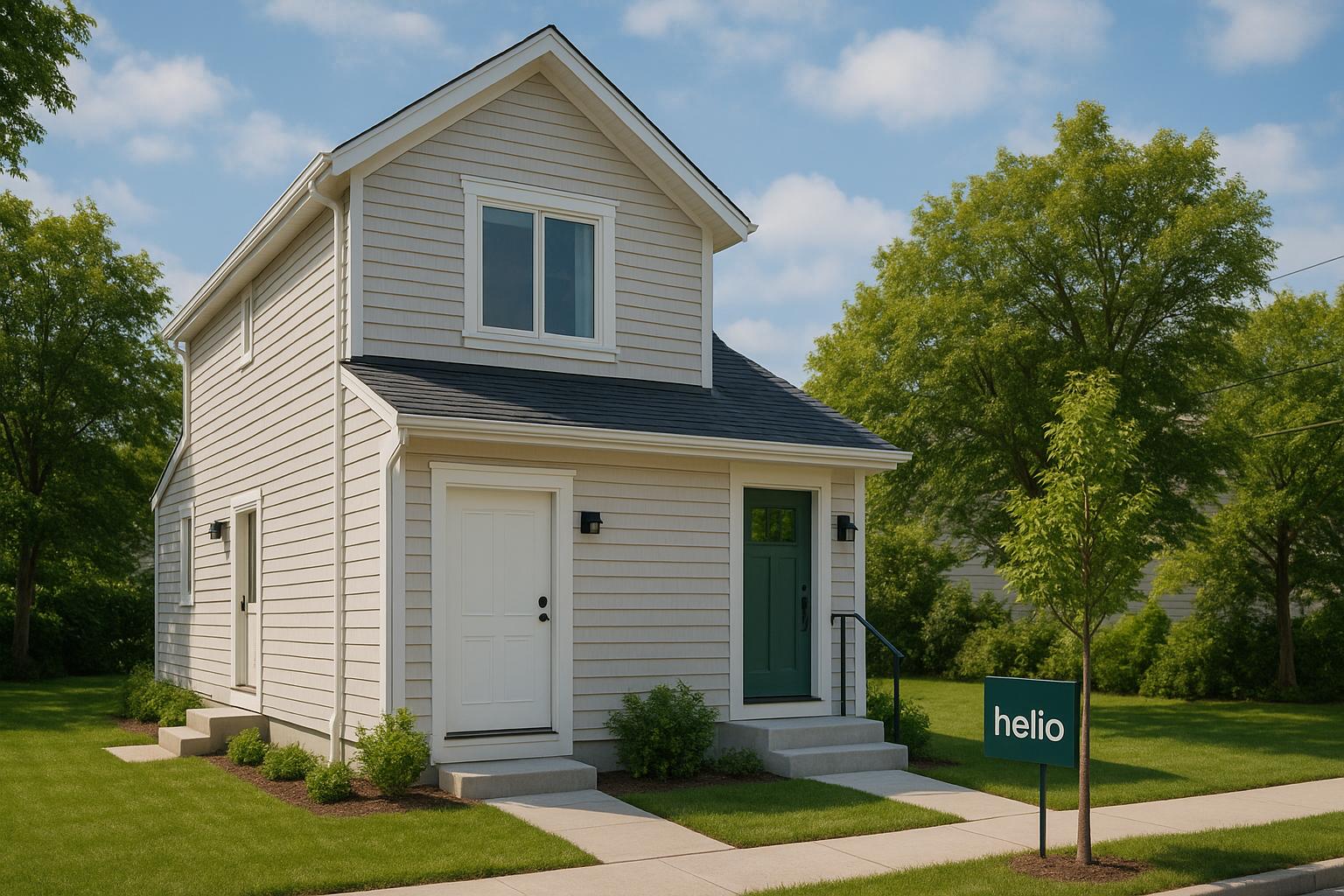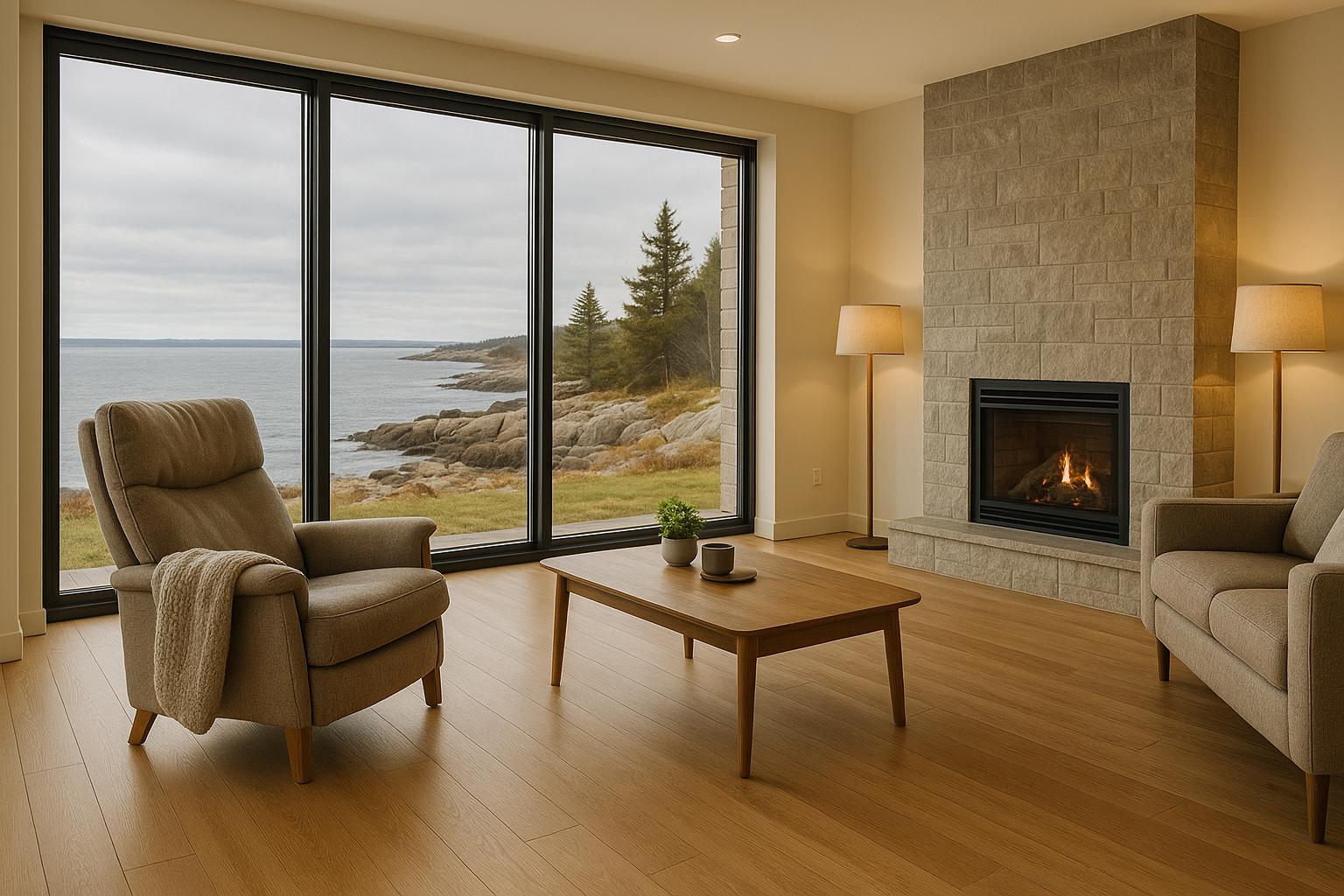Heat pumps are an efficient solution for heating and cooling 6-unit buildings in Atlantic Canada’s coastal climate. These systems handle the region’s mild winters, humid summers, and fluctuating temperatures effectively - if sized and installed correctly. Proper sizing considers factors like salt-laden air, humidity, and building insulation. Key installation practices, such as elevating outdoor units and applying anti-corrosion coatings, protect against coastal wear. Regular maintenance ensures long-term performance. For property owners, this approach balances tenant comfort with energy efficiency, making heat pumps a practical choice for multi-unit properties.
Intro to Heat Pump Sizing With The New Manual H

Key Factors for Sizing Heat Pumps in 6-Unit Properties
When choosing heat pumps for coastal Atlantic Canada properties, it's essential to account for the unique climate factors of the region - like salt-laden air, high humidity, and fluctuating temperatures - that can significantly impact performance. Generic sizing methods often fall short in these conditions, making it crucial to customize capacity and efficiency calculations.
How Coastal Climate Affects Heat Pump Performance
The coastal environment presents challenges that directly affect heat pump operation:
- Salt-laden air can corrode coils over time, reducing efficiency.
- Temperature swings demand a balance - sizing for the coldest winter days without overcompensating for milder conditions is key.
- High humidity in summer increases the cooling workload as heat pumps must dehumidify the air. Conversely, winter's moisture can help efficiency but also raises the risk of condensation and ice forming on outdoor units.
Additionally, the marine layer along the Atlantic coast creates localized microclimates. Properties closer to the ocean may experience distinct temperature and moisture conditions compared to those further inland, requiring more precise adjustments to heat pump sizing.
Building Envelope Requirements
A building's envelope plays a critical role in determining heating and cooling loads, especially in coastal climates. Here's what to consider:
- Air sealing: Coastal winds and pressure differences can cause significant air leakage in poorly sealed buildings, allowing conditioned air to escape and moist outdoor air to enter. This increases heating demands and must be factored into load calculations.
- Insulation: Without proper moisture barriers, insulation can lose effectiveness over time due to moisture infiltration. Regular maintenance and high-quality materials are essential.
- Windows: Salt air and wind-driven rain can compromise window performance. Investing in well-sealed, energy-efficient windows with protective coatings can significantly reduce heat loss.
- Thermal bridging: Structural elements that bypass insulation can lead to heat loss. In coastal properties, salt air can worsen this issue by increasing the conductivity of certain materials, further amplifying energy losses.
Humidity Control and Ventilation Needs
Managing humidity is another critical factor in coastal properties. Heat pumps alone may struggle to maintain ideal indoor conditions during humid summers, so additional systems and considerations are often necessary:
- Dehumidification: While heat pumps remove some moisture during cooling, coastal properties benefit from dedicated dehumidification systems to ensure comfort and prevent excess humidity.
- Ventilation systems: Heat recovery ventilation (HRV) or energy recovery ventilation (ERV) systems are excellent options for coastal properties. These systems exchange stale indoor air for fresh outdoor air while reclaiming energy and helping manage humidity levels. However, due to salt air exposure, components should be corrosion-resistant, and maintenance needs may increase.
- Ventilation loads: Enhanced ventilation to maintain indoor air quality can add to the overall heating and cooling demand, which should be taken into account when sizing heat pump systems.
Step-by-Step Heat Pump Sizing for Multi-Unit Properties
Properly sizing heat pumps for a 6-unit coastal property involves a detailed evaluation of heating and cooling needs. The process begins with the Air Conditioning Contractors of America (ACCA) Manual J® Residential Load Calculation, a trusted standard in the industry. Here's how to ensure your equipment selection matches the calculated demands.
How to Calculate Load Requirements
Start by conducting Manual J calculations for each individual unit. This method considers factors like the building's insulation, local climate conditions, and how the space is used, giving you an accurate estimate of heating and cooling loads.
Selecting Cold-Climate Heat Pumps
Once the load requirements are clear, opt for cold-climate heat pumps that can operate efficiently during harsh Atlantic Canadian winters. The equipment you choose should align with the calculated needs to maintain comfort and efficiency.
Fine-Tuning for Occupancy, Orientation, and Internal Heat Sources
With the baseline load calculations in hand, refine your equipment choices based on real-world conditions. Think about factors such as how the property is occupied, the building's orientation, and any internal heat sources that could impact performance. These adjustments ensure the system is tailored to the unique demands of the property.
Installation and Maintenance for Coastal Properties
When it comes to building in Atlantic Canada’s coastal environment, proper installation and maintenance play a huge role in ensuring your equipment lasts and performs well over time. A careful approach not only protects your investment but also enhances tenant comfort.
Where to Place Outdoor Units
The placement of outdoor units is key to their longevity. By reducing exposure to salt and ensuring good airflow, you can significantly extend their lifespan.
- Elevate the units: Install outdoor units on platforms at least 0.6 metres (2 feet) above ground level. This helps reduce exposure to salt mist and protects against flooding risks. It also improves water runoff, minimizing potential water damage [1][2][3].
- Shield from wind and salt spray: Avoid prevailing winds or use landscaping with salt-tolerant plants or fencing to block salt spray. If placement options are limited by the building’s layout or electrical setup, consider creating wind barriers with shrubs or fencing - but make sure these don’t restrict airflow around the unit [2][3].
Once the outdoor units are properly positioned, additional steps can help protect them from the harsh coastal environment.
Protecting Against Coastal Wear
Coastal conditions can be tough on equipment, but with the right precautions, you can keep everything running smoothly.
- Apply anti-corrosion coatings: Protect the coils by adding a water- and salt-repellent coating. These coatings can be applied at the factory or by a qualified technician after installation. They create a protective barrier that helps extend the life of condenser and evaporator coils [1][2][3].
- Use coastal-specific covers: Invest in covers designed for coastal environments. These covers protect the units from direct salt air exposure while allowing proper airflow. Avoid generic covers that might trap heat or restrict ventilation [1].
- Establish a cleaning routine: Rinse the coils gently every few weeks during peak salt season to remove salt, sand, and debris. Use low water pressure to avoid damaging the fins and focus on clearing visible salt deposits [1][2][3].
- Monitor for corrosion: Keep an eye out for rust, discolouration on the coils, reduced airflow, or an increase in repairs. These are signs of salt damage and should be addressed promptly to prevent more serious issues [3].
- Maintain the area around the unit: Clear away leaves, sand, and mulch regularly, as these can trap moisture and speed up corrosion. Trim nearby vegetation to keep the area around the unit free of organic debris [1].
sbb-itb-16b8a48
Conclusion: Success with Integrated Heat Pump Design and Construction
Getting the heat pump sizing right for a 6-unit coastal property hinges on seamless coordination between design, engineering, and construction teams. The difference between a smooth-running project and one riddled with issues often boils down to how well these teams work together.
Why a Design-Build Approach Works
Coastal properties come with unique challenges, and tackling them requires a unified approach. Traditional methods, where different contractors handle separate tasks, often lead to miscommunication and costly mistakes. A design-build approach solves this by having one team manage everything - from building envelope design to heat pump installation. This ensures that every element is designed to work together. For instance, engineers tailor their designs to match the insulation and air sealing provided by the construction team, while electricians plan ahead to meet the system’s needs.
This approach also brings clarity to costs and timelines. Instead of juggling multiple contractors and hoping they stay on track, property owners benefit from fixed pricing and guaranteed schedules. For example, a design-build team might commit to completing the project in six months, with penalties for delays. This streamlined coordination can save property owners approximately $47,000 in costs, while also ensuring timely rent collection.
When design and execution are in sync, coastal multi-unit buildings achieve consistent comfort and efficiency.
Practical Tips for Property Owners
For rental properties in Atlantic Canada’s coastal climate, success starts with detailed planning. Accurate load calculations are critical - consider factors like salt air, humidity, and temperature swings instead of relying on generic estimates. Using precise Manual J calculations ensures your system is tailored to your building’s unique conditions.
Opt for heat pump models rated to perform efficiently in temperatures as low as –25°C. This avoids the need for expensive backup heating during harsh winters.
Humidity control is another key consideration. From the start, make sure your ventilation and electrical systems are designed to handle the demands of a coastal environment.
Protect your investment during installation. Raise outdoor units at least 0.6 metres above ground, apply anti-corrosion coatings, and establish a regular maintenance schedule to combat salt exposure.
Finally, work with professionals who understand how to integrate heat pump sizing with building design, electrical capacity, and coastal protection. Self-managed projects often result in poorly sized systems or premature equipment failures.
When proper sizing, expert installation, and consistent maintenance come together, heat pumps can deliver excellent performance for coastal rental properties. Tenants enjoy year-round comfort, operating costs remain predictable, and property owners see strong returns on their investment. It’s a winning formula for everyone involved.
FAQs
How can I choose the right size heat pump for a 6-unit rental building in Atlantic Canada’s coastal climate?
Choosing the Right Heat Pump Size for a 6-Unit Building in Atlantic Canada
When sizing a heat pump for a 6-unit building in Atlantic Canada’s coastal climate, precision is key. Start by conducting detailed load calculations for each unit. This means factoring in insulation levels, the size and type of windows, and the region’s characteristic coastal humidity. Bringing in a professional for an energy assessment can help ensure these calculations are accurate.
Opt for a cold-climate rated, multi-zone heat pump that aligns with the building’s combined heating and cooling needs. Avoid systems that are too large or too small, as they can lead to inefficiencies or inadequate performance.
Given Atlantic Canada’s harsh winters, it’s crucial to select a system designed to handle low temperatures while maintaining high efficiency. A properly sized and installed heat pump not only keeps tenants comfortable but also boosts energy efficiency and lowers operating costs over the long term.
What maintenance steps can help keep heat pumps running efficiently in Atlantic Canada's coastal climates?
To keep your heat pump running smoothly and extending its lifespan in coastal areas, there are a few key steps to follow. Clean or replace the filters every month to maintain proper airflow and avoid unnecessary strain on the system. For outdoor units, wash away salt buildup regularly to guard against corrosion, especially if you're near the ocean. Consider investing in corrosion-resistant models with coated coils, as they're designed to handle the challenges of coastal environments. Lastly, make it a priority to schedule annual professional maintenance. This ensures your system is thoroughly inspected and tuned to perform efficiently throughout the year.
What are the benefits of using a design-build approach for heat pump installations in 6-unit coastal properties in Atlantic Canada?
The Benefits of a Design-Build Approach for Heat Pump Systems
A design-build approach simplifies the construction process by bringing design and building teams together from the very beginning. This collaboration is particularly effective in addressing the unique challenges of Atlantic Canada’s coastal climate, such as high humidity, fluctuating temperatures, and exposure to harsh weather conditions.
By working as one unit, these teams can create heat pump systems that are better suited to the region’s specific needs. This method improves energy efficiency, enhances humidity control, and ensures that systems are correctly sized for multi-unit properties. Additionally, it reduces delays and uncertainties by consolidating contracts, providing property owners with more predictable costs and a smoother overall experience.
For properties in coastal areas, this approach is especially beneficial, as it helps deliver long-term tenant comfort and dependable system performance despite the demanding environment.
Related Blog Posts
- Building on the Nova Scotia Coast: How to Design and Construct Durable Seaside Home
- Building for Nova Scotia’s Climate: Weather-Proofing Your New Home
- Green Building in Nova Scotia: Top 10 Energy-Efficient Features for Your Custom Home
- Building a Winter-Ready Home in Nova Scotia: Design Tips for Harsh Weather



